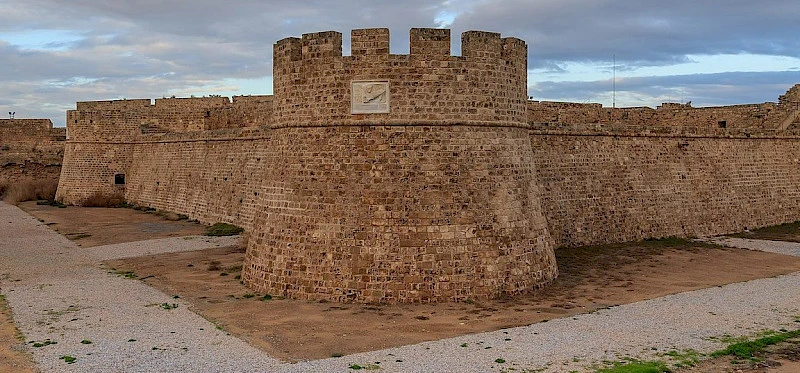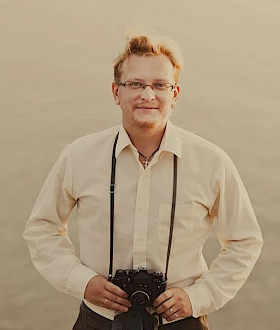Othello Castle in Northern Cyprus
One of the most fascinating landmarks of Famagusta, attributed with ties to Shakespeare's famous character.

Othello Castle in Famagusta
Othello Castle, or Othello Tower, is a fortification in Famagusta built by the Lusignans in the 14th century, later modified by the Venetians.
The castle consists of four round towers. It includes a dining hall and dormitory constructed during the Lusignan era. Cannonballs left by the Spaniards and Ottomans, relics of the castle's turbulent history, are preserved in its courtyard.
The castle restoration began in 2014, and on July 3, 2015, it reopened to visitors.
History of Othello Castle
Originally known as the Harbor Citadel, it was built in the 14th century by the Lusignans, who ruled the Kingdom of Cyprus. Fortifications by the Prince of Tyre existed on this site as early as the late 11th century.
After Cyprus was ceded to the Venetian Republic, they completely rebuilt the citadel into a military fortress. By removing the second floor and aligning the building level with surrounding walls, they made it invisible from outside the city. The Venetians strengthened the city's defenses by integrating the citadel into the main city walls, and the tower protected the port from potential enemy attacks.
While the thick walls were retained or reinforced, the medieval fortress's rectangular towers were replaced with round ones to better accommodate modern artillery such as cannons and gunpowder — non-cylindrical towers could easily lose corners under attack. The Venetians thus transformed the tower into a fort occupied by soldiers. It was also known to have been used as a prison in 1566.
In 1492, a marble figure of the winged lion of St. Mark, the patron saint of Venice, was carved above the castle's main entrance. The lion's front paws on land symbolized Venice’s land power, while the back paws in the sea symbolized its maritime empire. The inscription also notes the name of Venetian Captain Nicolo Foscarino, who supervised the castle's reconstruction. The citadel was then renamed in honor of Giovanni San Michele, the Venetian engineer responsible for much of the city’s redesign.
Connection to Shakespeare
The castle derives its name from Shakespeare's famous play "Othello," believed by some to take place in a port city in Cyprus. However, there is little concrete evidence for this.
Another theory suggests that Shakespeare was inspired by the story of the fortress's commander and Venetian governor, Cristoforo Moro, whose surname could be translated as "Moor." According to this theory, the commander indeed killed his wife out of jealousy.
How to Get There
The castle is located in the center of Famagusta, in the old city, with no direct bus service. The nearest public transportation stop is at the roundabout by Anit Park, at this point.
- You will find the exact location of Othello Castle below this text.
Parking at Othello Castle
Parking near Othello Castle is available at these GPS coordinates: 35.127844935153334, 33.941638348614774. This parking is popular with both castle visitors and others, as there is little parking in the old city.
Frequently Asked Questions
Is a ticket required to enter Othello Castle?
Yes, there is an entrance fee, and tickets are purchased at a separate booth near the entrance. As of 2024, the ticket costs 100 lira, but prices in Northern Cyprus change often, so be prepared for variations.
Is there a restroom at Othello Castle?
Yes, there is a restroom located near the ticket booths. It can be accessed without purchasing a castle entry ticket.
When is Othello Castle open?
In summer, the castle is open from 9 AM to 6 PM, and in winter it is open to visitors from 10 AM to 3 PM.
Follow us on Instagram and our Telegram channel for helpful updates on exciting places in Northern Cyprus!

